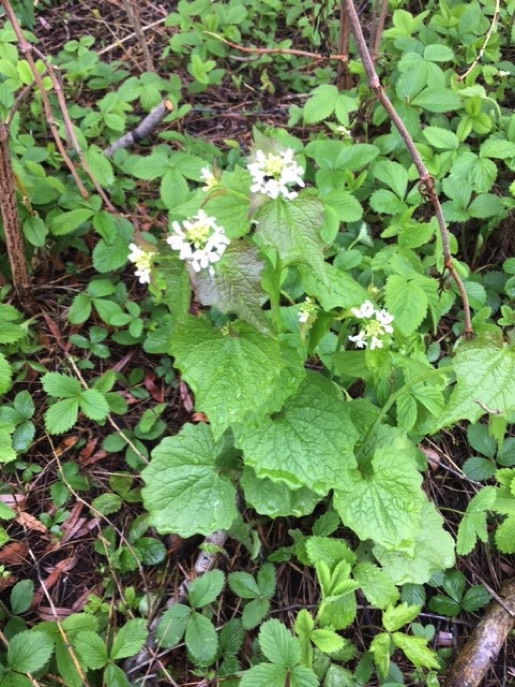Garlic Mustard
Alliaria petiolata (formerly Alliaria officinalis)

This plant produces flowering stems with clusters (up to about 1 inch across) of small white flowers. Each flower, four-petaled like other mustards, is about 1/4 inch across. As clusters bloom out, the stem ascends to produce another. Leaves are heart-shaped or somewhat pointed, wrinkled in appearance, with irregular indentations on the edge and a substantial petiole. A biennial, seeds of Garlic mustard produce a basal rosette of leaves the first year, which remain green through the winter months. The flowering spike appears in the second year, which after flowering yields large quantities of seed that drop to repeat the cycle. For this reason it often forms dense patches.
The foliage is edible and has been used as a salad herb and cooked for sauces because of its flavor, which is reminiscent of both garlic and mustard. It was probably introduced to North America by European settlers for this reason, but it has since spread and is considered one of the most disruptive invasive plants in North America because it can dominate the understory in woodlands and crowd out native species.
1-3 feet, sun-shade.
Spring - Early Summer(April-July).
Garlic Mustard, 10 May 2020.